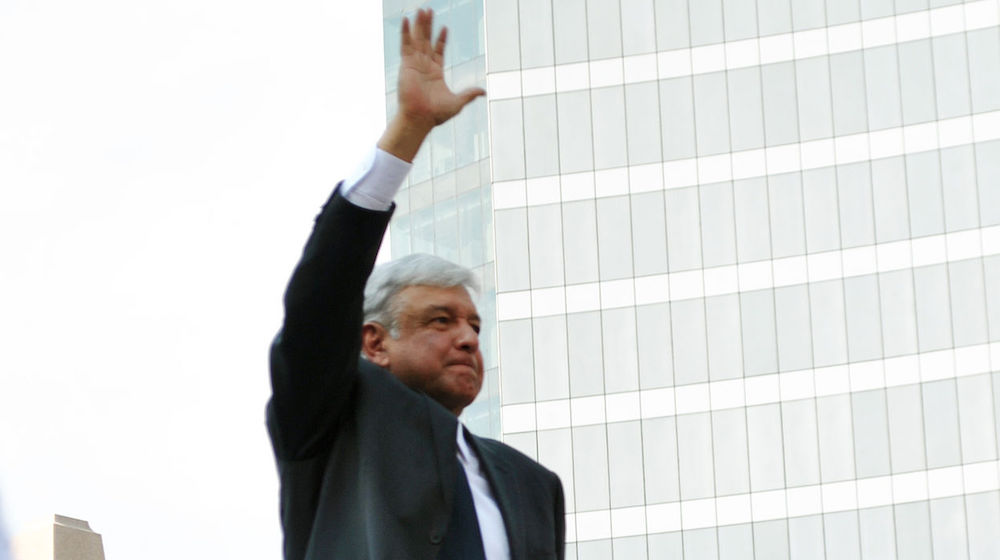A more robust version of this article appeared in Spanish in the March 2019 edition of Nexos, a Mexican monthly magazine.
In February 2010, two teenagers were walking in the street in the Mexican state of Guerrero. They were arrested by members of the army for no reason and questioned about a supposed stolen car. The interrogation included torture.
The teenagers were never taken to the police or any other civil authority but rather transported in army vehicles to a soccer field. There, they were brutally tortured once again. One of them died as a result.
This incident was investigated by the National Commission on Human Rights (Comisión Nacional de los Derechos Humanos, CNDH), which is responsible for dealing with human rights matters in Mexico. This story is concerning, but it was not an isolated event. It just illustrates how some members of the army carry out what they call a “constant fight against drug trafficking.”
This strange war — that allows members of the Mexican army to torture ordinary Mexicans to obtain information about a stolen car — was started in 2006 by the former president Felipe Calderón. The strategy continues to this day, even though drug trafficking and organized crime have not ended. It launched an unprecedented crisis of violence and authorized the country’s militarization.
In 2018, Andrés Manuel López Obrador won the presidential elections. Millions voted for him because he promised to appease the country and address the structural causes of violence, such as poverty and unemployment. He promised “hugs, not bullets.”
As president, however, López Obrador has tried to give the army a more prominent role through a military police force that he has euphemistically called the “National Guard.” In this context, we must improve our understanding of how the military works on the streets in Mexico.
Between 2006 and 2018, the CNDH documented at least 78 cases in which the Mexican army perpetrated acts of torture and cruelty. These records are public and available to anyone worried about the human rights situation in Mexico. What those 3,000 pages of records show is disturbing.
Torture is practiced in groups. In 98% of cases, victims were tortured by two or more members of the army. Those responsible are not just a few “rotten apples” — torture is learned and socialized.
Ordinary citizens have not been the only victims. In more than 10% of cases, military groups tortured members of the police. In 2009, for example, three police officers were patrolling the streets in the state of Chihuahua when military officers opened fire on them. One police officer was seriously injured; the others were tortured and falsely imprisoned in army barracks.
To justify their actions, the military argued that the police patrol “was found to be behaving suspiciously.” In what sort of democracy is it suspicious when the police patrols a neighborhood but not when the army does it?
Records show that the military uses well-known torture techniques. In 49% of cases, victims suffered some kind of asphyxia (e.g. waterboarding), and in 37% they suffered electrical shocks. These torture methods involve some kind of training, equipment, or at least implicit authorization.
According to the records, a single victim could have suffered different types of torture. In 2012, for example, a man was subjected to electrical shocks, was suffocated with a plastic bag over his head, was brutally beaten with a pole, and had his head submerged in a barrel of cold water. The army officers who detained him put a funnel in his mouth and urinated through it.
Torture is preceded or followed by other abuses: unlawful arrest (84%), incommunicado detention (80%), forced entry (32%), and theft (19%). Some victims were murdered. It would seem that it is not difficult to torture because it is easy to unlawfully detain people first. This is the context facilitated by the war on drugs and the militarization of the country. Why, we might ask, does the president want to maintain this policy?
In 71% of cases, there is information about victims being unlawfully detained in army centers. In a democracy, ordinary citizens are never imprisoned in army facilities — and less so when there is evidence that they are tortured there.
Torture has been considered a secret act because it tends to occur in hidden places where state officials cover their tracks. This is understandable because the practice is totally forbidden in any democratic regime. The CNDH records, however, show a different, disconcerting reality. In 78% of cases, torture was performed in plain sight: in the street, a bar, or the victims’ home. The army does not seem to be aware that it is perpetrating crimes against humanity in public.
In western democracies, current debate on drug policies revolves around how citizens can exercise their rights to substance use in a safe and healthy way: medicinal or recreational use of cannabis, for example. In Mexico, by contrast, the discussion about drug policy focuses on how to increase or limit the army’s role in domestic issues (like randomly interrogating innocent people in the street).
Not long ago, Mexico had an authoritarian regime. Democracy is recent, and democratic values are not deeply rooted. President López Obrador’s approach to drug policy could make a huge difference to the way Mexico is governed: he could choose to strengthen democracy or give even more power to the army, whose record on human rights is worrying.


